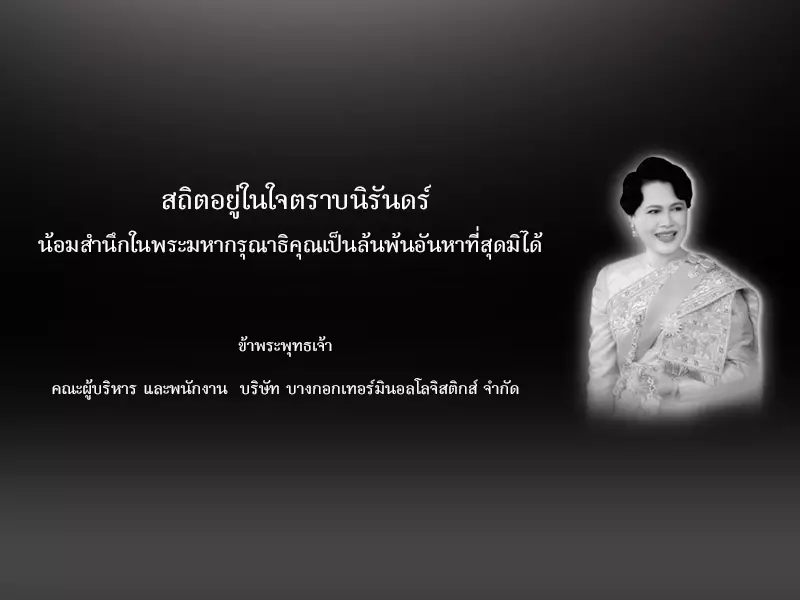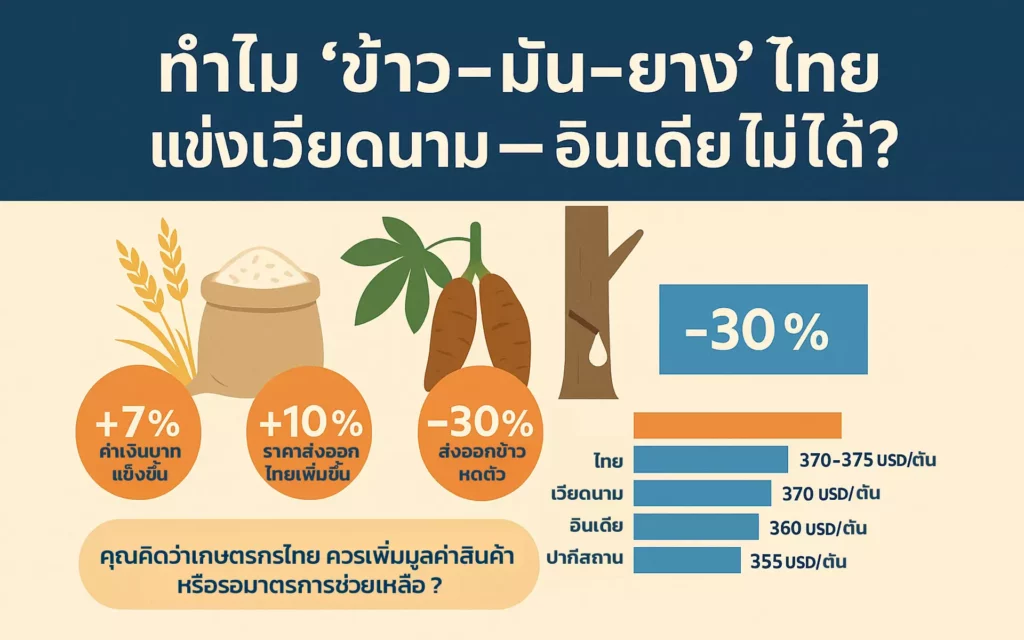



Since the beginning of 2025, the baht has strengthened by more than 7%, while competitors such as Vietnam, India, and Malaysia have weakened their currencies against the US dollar. This has resulted in Thailand's main export products, including rice, cassava, and rubber, experiencing costs rising by more than 10%, immediately reducing their competitiveness.
Worrying signal: Rice exports shrink by more than 30%
Data for the first 8 months (January-August 2025) shows that Thailand exported only 5.03 million tons of rice, valued at US$2,987 million (approximately 99 billion baht), a decrease in both value -30.6% and volume -24.1% compared to the previous year. The main markets remain the United States, Iraq, South Africa, China, and Hong Kong.
“Cassava” is at a disadvantage against Vietnam.
The baht has strengthened by more than 6–7%, while Vietnam’s has weakened by the same amount, leaving Thailand at a 10% disadvantage, particularly in exporting tapioca flour to China. Thailand holds about 60% of the market share, while Vietnam holds as much as 90%. The selling price difference is still nearly $50 per ton.
“Rubber” has difficulty competing with Malaysia.
The baht is stronger than the Malaysian ringgit, making it more difficult for Thai rubber exports, especially processed rubber, which may lose an average profit of 500-1,000 baht per ton. This has forced many factories to seek ways to hedge their currency exposure or shift to domestic sales.
Sugar: Limited Effect
On the contrary, sugar exports are not significantly affected because forward contracts are already in place and each market has a clear quota.
Source: Prachachat Business